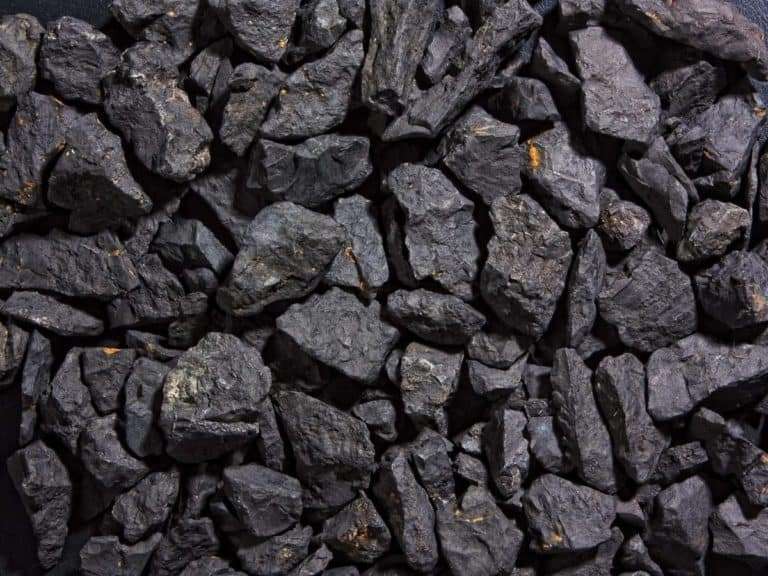Solar Panels are becoming a great source of energy. In 2010, about 1.2 million solar panels were installed in homes and businesses across the United States. The average residential system is around 10 kW (kilowatts) which would generate about 7200-kWh each year, based on insolation of 4.2 sun hours/day.
To put that into perspective, consider this: it takes about 6 tons of coal to produce 7200-kWh, which would be required to power one home for a year using 10 kW of solar panels.
Therefore, it takes approximately 1 ton of coal to power the average residential solar system for one year. As the need and demand for solar power increases, so does the quantity and efficiency of production and installation.
In this article, we’ll be going through:
- The effects of solar power on the environment
- What fuel is used to make solar panels
- How much pollution it takes to make a solar panel
You’ll be surprised how much coal it takes to make a solar panel and its effect on the environment. Read through to the end to find out.

How much coal does it take to make a solar panel?
It takes about 1 ton of coal to power the average residential solar system for one year because it takes approximately 1 ton of coal to power 7200-kWh.
There is a correlation between how much coal is used and the efficiency of solar panels. As the need and demand for solar power increases, so does the quantity and efficiency of production and installation.
Solar panel efficiency has increased by over 100% in just five years – with further gains expected in the coming years.
As more people use alternative energy resources, there is an increase in awareness on how much electricity usage costs us as individuals, companies, states, or even whole countries.
Renewable energies like solar panels require so much coal to produce the same amount of energy that 7200-kWh would generate yearly because of its high efficiency and low cost.
This allows it to frequently supply enough energy to power a home for an entire year (and even much more). Because the demand for this kind of energy is increasing, we can expect further efficiency gains.
For example: if you consider that 1 ton of coal equals 7200-kWh (in total), then let’s look at how many kWh it takes to power something as small as your laptop computer – which usually takes about 5 or 6 kWh/year.
Considering those figures, it equates to roughly 15 tons of coal per laptop unit, so imagine how much coal is used daily for laptops alone.
If, however, we consider other less-efficient or older solar panel technologies (which are still used in some cases), like the polycrystalline silicon type (used in commercial PV systems), which currently has an efficiency of around 15%, it takes about 21 tons worth of coal using today’s standards to produce enough kWh’s yearly to power one life for a year.

What are the effects of solar power on the environment?
Solar panels reduce greenhouse gas emissions and climate change: coal power plants produce a lot of emissions, so if photovoltaic solar panels replace those power plants, there will be fewer emissions.
In recent years, more people have become concerned about the environmental and global warming effects of fossil fuel use – an alternative to burning all that coal is to use renewable energy resources like solar.
Solar energy production does not emit greenhouse gases or produce air pollution during electricity generation.
As a result, switching to clean energy production can help limit global warming and other environmental issues caused by carbon dioxide emissions from coal-fired power stations.
The most significant impact on coal consumption comes from direct substitution for coal-generated electric power due to low coal prices and renewables subsidies.

See also: Solar Panel Manufacturing: A Comprehensive Guide for Beginners
What is coal?
Coal (from the Old English col, Col) is a combustible black or brownish-black sedimentary rock usually occurring in rock strata in layers or veins called coal beds or coal seams.
The more intricate forms, such as anthracite coal, can be regarded as metamorphic rock because of later exposure to elevated temperature and pressure.
- Coal comprises carbon and variable quantities of other elements, chiefly hydrogen, sulfur, oxygen, and nitrogen.
Coal is extracted from the ground by coal mining that uses various techniques, including strip mining and deep shaft mining.
Most coal is mined using surface mining, but some gas coals are still mined underground using traditional pit mining methods.
It is usually burned in a power plant to produce electricity. Thus its energy content is classified as a fossil fuel.

Is coal used to make solar panels?
Yes, coal is used in producing solar panels and as a raw material to produce the chemicals used in the manufacturing process.
The main chemical used during this process is polyvinyl chloride (PVCs) which is very hazardous and poisonous.
Using such materials will increase pollution levels worldwide, leading to global warming. It will also release toxic materials if it is burnt or not disposed of correctly.
The raw material for the solar panels is coal, with an average life of 11 years. This means that 11 tons of coal must be burned to make a solar panel – about 3000 pounds! The production process uses high temperatures and pressures.
Solar panels are connected to electric systems that form part of overall electricity networks, including transmission lines to generation plants. Electricity generated by these photovoltaic cells flows to customers via existing power grids.

How much pollution does it take to make a solar panel?
To produce a solar panel it takes 11 tons of coal. A typical power plant produces 10 tons of ash for every ton of coal burned – so if the panels are made with this material, you’ve just increased your requirements by 11 tons per panel!
The process of making the chemicals used in the production process creates dioxins.
Dioxins can cause reproductive and developmental problems in humans and animals, damage to chromosomes, hormones, and immune systems, and some types even cause cancer.
Solar panels also do not last forever – they have an average lifetime of 11 years. To produce 1 billion square meters of solar panels would require 2,000 million metric tons of coal – that’s 20 billion pounds!
It takes three pounds of coal to create one pound of polyvinyl chloride (PVC), a chemical commonly known as plastic.
So if it takes 3 pounds of coal to produce 1 pound of PVCs, then 33 billion pounds would be required for all the plastics needed for 1 billion square meters – or about 100 million 50-gallon drums filled up.
The energy to manufacture the panels, create the PVCs and dispose of them all cause pollution. So you are releasing poisonous chemicals into your environment and adding to global warming by the production process alone.

What Fuel is used to make solar panels?
The primary raw material required to produce solar panels is coal. Coal is burned as a fuel in power plants, and its heat creates steam that rises and rotates turbines that generate electricity.
This process begins with the mining of coal, which results in large-scale environmental degradation through air and water pollution.
Besides this, burning coal releases harmful greenhouse gases like carbon dioxide (CO2), sulfur dioxide (SO2), and nitrogen oxide (NOx) into the atmosphere, causing global warming and acid rain.
The process of manufacturing solar panels is energy-intensive, and so there are byproducts created through this. Some of these, such as cadmium chloride, have been identified as hazardous and poisonous.
Using such materials will increase pollution levels worldwide, leading to global warming. It will also release toxic materials if it is burnt or not correctly disposed of.



